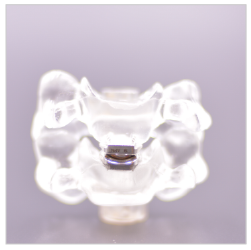Introduction
 As an alternative to a cervical fusion, cervical disc replacement involves the placement of an implant to preserve neck motion. This procedure commonly is used to treat cervical disc herniations, cervical spinal stenosis, cervical degenerative disc disease, and cervical radiculopathy.
As an alternative to a cervical fusion, cervical disc replacement involves the placement of an implant to preserve neck motion. This procedure commonly is used to treat cervical disc herniations, cervical spinal stenosis, cervical degenerative disc disease, and cervical radiculopathy.
Cervical Disc Replacement (also known as Cervical Artificial Disc Replacement) is still relatively new to the U.S, having been first approved in 2007. At present, there are several different implant designs of cervical artificial discs. Published outcomes have shown a very high success rate in alleviating radiating pain in the arm(s) and scores high in satisfaction for the appropriately selected patient in the short-term. Long term outcome data is not available. The hope with cervical disc replacement is that it will protect against, or at least minimize, the risk of developing degeneration above or below the level being operated on.
This procedure can be performed on an outpatient basis for many patients. As with any surgical procedure, there are potential risks and benefits that should be discussed and considered.
Last modified: October 22, 2019





